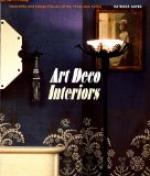Next we have walls sheathed with wood panelling. Then during the late Renaissance, painted portraits were let into these panels and became a part of the walls. Later, the upper half, or two-thirds of the panelling, was left off, and only a low panelling, or “dado,” remained. This, too, disappeared in time.
Landscape paper was the bridge between the panelled walls with pictures built into them, and the painted or papered walls with pictures hung on them. The paper which we have already referred to, is one of the finest examples of its kind, and while there is only enough for one side of a room, it is valued at $5,000. The design is eight feet high, each strip 22 inches wide, and there are eighteen of the original twenty strips. Two breaks occur, numbers 16 and 18. The owner believes that the Puritan attitude of her ancestors caused them to destroy the panels which showed nude figures engaged in battle. This paper is now the property of Mrs. Eliza Brown of Salem, Massachusetts. It was found in her grandfather’s attic in Gloucester, and was given to Mrs. Brown by her grandmother. It was in an army chest belonging to Judutham Baldwin, a Colonel of Engineers in the Revolutionary Army, who laid out the forts in Boston Harbour.
Kate Sanborn, in her book on “Old Wall Papers” speaks of this particular paper. “Paper from the Ham House at Peabody, Massachusetts, now occupied by Dr. Worcester. Shows tropical scenes. These scenes are quite similar to those of the Pizarro paper and may have been the work of the same designer.” (The so-called “Pizarro in Peru” paper is shown in plate 34 and 35 of the same book, and is in Duxbury, Mass.) Pizarro’s invasion of Peru was in 1531. The colouring of Mrs. Brown’s paper is white background with foliage in vivid greens, while figures of Peruvians wear costumes of brilliant blues and vermillion reds, a striking contrast to their soft, brown skins.
This paper is now in the market, but let us hope it may finally rest in a museum.
CHAPTER XXIII
THE REVIVAL OF DIRECTOIRE AND EMPIRE FURNITURE
The revival of Directoire and Empire furniture within the past few years, is attributed by some, to that highly artistic, and altogether illuminating publication, the Gazette do Bon Ton—Arts, Modes and Frivolities—published in Paris by the Librarie Centrale des Beaux Arts, 13 rue Lafayette and contributed to by the leading artists of Paris—the ultra moderns.
There was a time, fifteen or twenty years ago, when one could buy Empire furniture at very low figures, for in those days there was many a chance to pick up such pieces. To-day, a genuine antique or a hand-made reproduction of an antique made sixty years ago, will command a large price, and even in Paris one has difficulty in finding them in the shops at any price.
Empire furniture ceased to be admired in America when the public got “fed up” on this type by its indiscriminate use in hotels and other public buildings.




